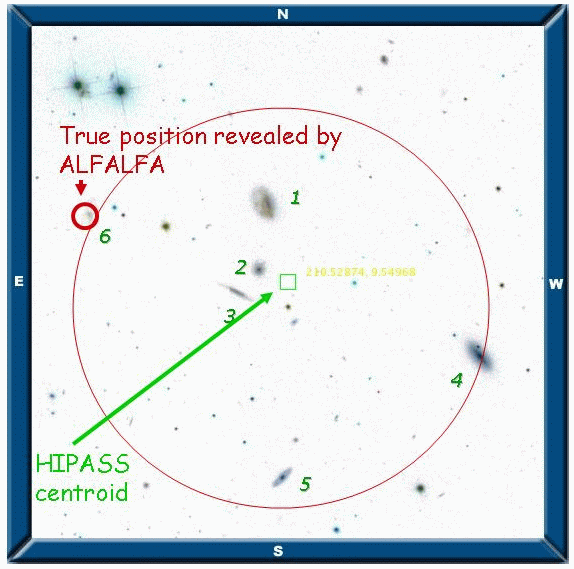

| The ability to fix the centroid of emission of a point source in an image goes roughly as the angular resolution (i.e. its point spread function, PSF) divided by the signal-to-noise ratio S/N. In radio astronomy, we usually refer to the PSF as the half power beam width HPBW; for ALFA, the effective HPBW is ~3.5 arcmin. Let's compare the centroiding accuracy for ALFALFA with that of the HI Parkes All Sky Survey HIPASS. We use for illustrative purposes the image of a galaxy group shown to the right; suppose the redshifts are not known apriori for any of the targets. Suppose HIPASS detects a source at S/N ~ 6 at a velocity of 3200 km/s in the field to the right. The position error box will have a radius for HIPASS of about 2.5 arcmin. Because of its superior sensitivity, ALFALFA will detect the same source with a S/N of 50. And, the Arecibo beam is 1/4 as wide as the Parkes one. Hence, the same source will have an ALFALFA position error of only 0.1 arcmin, 25 times better than HIPASS. In this hypothetical case, the optical counterpart to the HIPASS source would probably have been misidentified. |

|